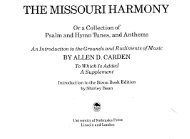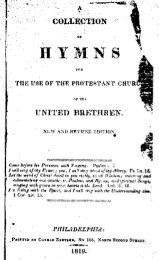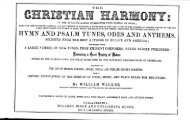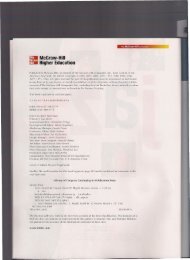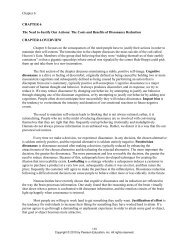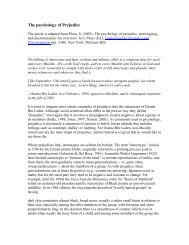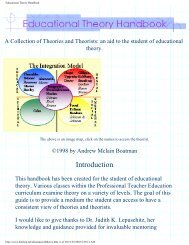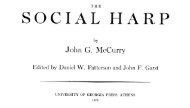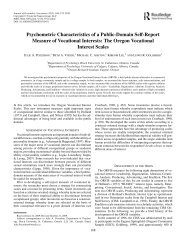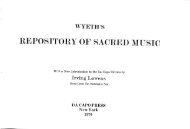Cleavage Structures.pdf
Cleavage Structures.pdf
Cleavage Structures.pdf
You also want an ePaper? Increase the reach of your titles
YUMPU automatically turns print PDFs into web optimized ePapers that Google loves.
52 cLEAvAcE srRucruREs, pARTy sysrEMs, AND vorER ALIGNMENTS<br />
great deal of leeway for "post-democratic" party formations on the Protestant<br />
right. konically, it was the defeat of the National Socialist regime and the loss<br />
of the Protestad East which opened up an opportunity for some stabilization<br />
of thc German party system. With the establishment of the regionally divided<br />
CDU/CSU the Germans were for the first time able to approximate a broad<br />
conservative party of the British type. It was not able to establish as solid a<br />
membersbip organization but proved, at least until the debacle of 1966,<br />
nmadngly effective in aggregating interests across a wide range of strata and<br />
sectors of tbc federal commuuity.<br />
Two otber countries of the West have experienced spectacular changes in<br />
their party systems since the introduction of universal suffrage and deserve<br />
sone conment in this context-Italy and Spain. The Italian case comes close<br />
to the German: both weut through a peinfg[ process of belated unification;<br />
bottr were deeply divided within their privileged strata between "nationbuilders"<br />
(Prussians, Piedmontese) and Catholics; both had been slow to<br />
recognize the rights of the working-class organizations. The essential difference<br />
lay in the timing of the party developments. In the Reich a difterentiated<br />
party sEucture had been allowed to develop during the initial mobilization<br />
phase and had been given another fifteen years of functioning during the<br />
Weimar Republic. In Italy, by contrast, the State-Church split was so profound<br />
that a structurally responsive party system did not see the light before<br />
1919-three years before the March on Rome. There had simply been no<br />
time for the "freezing" of any party system before the post-democratic revolutiou,<br />
and there was very little in the way of a traditional party system to<br />
fall back on after the defeat of the Fascist regime in 1944. True, the Socialists<br />
and the Popolari had had their brief spell of experience of electoral mobilization,<br />
and this certainly counted when the PCI and the DC established themselves<br />
in the wake of the war. But the other political forces had never been<br />
organized for concerted electoral politics and left a great deal of leeway for<br />
irregularities in the mobilization market. The Spanish case has a great deal<br />
iu common with ttre French: early unification but deep resentments against .<br />
central power in some of the provinces and early universalization of the suf- ,<br />
frage but weak and divided party organizations. The Spanish system of sham<br />
parliamentarianism and caciquismo had not produced electoral mass parties<br />
of any importance by the time the double threat of secessionist mobilization<br />
and working-class militancy triggered off nationalist counterrevolutions, fust<br />
under Primo de Rivera in 1923, then with the Civil War in 1936. Ths entire<br />
history of Spanish electoral mass politics is contained in the five years of the<br />
Republic from 1931 to 1936; this is not much to go on and it is significant<br />
that a lucid and realistic analyst like Juan Linz does not base his projections<br />
about the possible structuring of a future Spanish party system on the experiences<br />
of those five years but on a projection from Italian voting alignments.o2<br />
These four spectacular cases of disruptions in the development of national<br />
party systems do not in themselves invalidate our initial formulation. The<br />
most important of the party alternatives got set for each natioual citizenry<br />
<strong>Cleavage</strong> <strong>Structures</strong>, Party Systems' and Yoter Alignments<br />
threecasesof France,Germanv'TqJip^9:::::l:::TT"3"*".1tJ:3lt[?<br />
H':,":rffi',TJ?i!'oY-ifr il":i"",'i"t'ttrffi$::gfi:tr*3lj_q<br />
;il-;; F e"nch case is ii manY waYs the<br />
""i"0 "t internatty generated- disruption o<br />
f-ouJ pUut" wouldclearly not have occurrec<br />
1940), but there rr*."ilJ"i"u r"*u"r "t nior"ot oscillations between plebis'<br />
citarian -d ,"pr"r""tuiiiJ'"t"J"rt of a"to"i""v and marked organizational<br />
frasmentation both ",.th; i"u"r or interest aiiicuiation and at ihe ievel of<br />
pur-ti"r. In spite of th;;]';;i;Pt;l* "o *urv't of French politics is<br />
'i";;;h;dq"'*:*"";1,H.;I'"1*'i1*",X;;il:li'$::liil1i*'*::;<br />
H"-XXffi #tl"ll",h;;i;;d"*uuti,""ffi il,ui'-.ui"o'ica'vgiven<br />
lXiitJi;ril""iar"*'"pil"* for the system as a whole'<br />
This "histori"ity" oi;fi;*i;;;1"J;; crucial rpPort'ance not only<br />
in the study of dift"':;:'"" ";;"il;ltt6t oi'ou nations brit also within<br />
",ations.<br />
The p^rty at"'"o"iiutt't;"O;;!8"" utta dominance not onlv from one<br />
overall sYstem to another but ft".T;; .e{ually. j;clf,t-io *ottt"i within the<br />
same poiity. to g"io JJuift^o<br />
o'f trt'" proc113;^of mobiliza-<br />
"nl "oa"rttuoJi"8<br />
tion and alignment #titt- *Il"tn-"^lu:t w! clearly'need information not<br />
iust about turnout ;; tl'" 'aiui'i'oo of uft"t-Uut a6out the timing of the<br />
iormation ol local ;;;'y";;;;;;;t"': This process of local entrenchment<br />
tan be pinpointed io'oiu"'ui ways: through Jte""i""tional records' through<br />
membership r"gist"'i, i"tot;utio'iabout<br />
^t[ittt"'ga the lists oresented at<br />
local electionr. n"p#"ii.:,i""it%.Ai,ir.^*iil^i.i*oti countries^of the West<br />
oDeo up much more direct access to powei resoulces than repres'ntation at<br />
tfie national r"*r. irrii""Jon""toti"r* lna io tot", the bickbone of the<br />
'#ffi',ffi<br />
[:f T1ffff'};j:,eyff:f;"*l'T"3"ffi :Sg*:t'+Tlf,t<br />
[r;'Jt'T;*t**r"wi""ru"'*";:T:"H[T[ffi ;'i:fffi l:<br />
of their organizatioi'i;#;tk..-tit;t may have iurvived on their trade<br />
union strength, uoiffi aaaitionat ,_"rori.J" Jotentials inherent in local offrces<br />
have meant much more them trr*rc-tfi"-p"t i"t deriving their essential<br />
-to<br />
strenqth from the networks of economic po*Lt'-ttota"rs or froim the organizationsif<br />
*'itt"-t*ay the Church'<br />
sntrenchment is still in its inlancy in<br />
of these Processes<br />
tl t:^"^1.:<br />
mostcountri"s,andsiriouscomparativestudieshavesofarneverbeenattemDted.eE<br />
rnis is'iiJ;;;-t5;t t."oo* lo empirical sociology'<br />
_political<br />
Theie is an unfortunate asymrietry in our knowled'ge and olr efforts at sys-<br />
tematization: *" i;;; ;;il'il# o{ m-e ;;;;;d through which poliricar<br />
alternatives ,,, "'Lll i#J'"ffi; #"t1;;;lut a gr6at deal<br />
-*tityt<br />
of information about the circumst*""t i" *tti"f, bne alternative or the other<br />
in the access to data' It is<br />
gets chosen.Thtt:"tlil;ily'-fir*".qii;t"n""t<br />
a time-consur"-g'#'ilrii",ing 1oU to assemule data locality by locality on<br />
,#^i;,;ti;;,d";;P;;'uia'0""'l:t;'u'"5;i'li:"?'.*":t"i'frffi ,f:<br />
ilil4;;i,"tions'<br />
ri is vastlY. easier.<br />
arternativesonce!i;;:;9;iih:f::lFff :?*::":l'"1"t"*5':X[i*:"i<br />
during the phases of mobilization just before or just after the final extension<br />
of the suffrage and have remained roughly the same decades of sub- *f H*?i *ri itit: li;ti""; x**?:X#J',nH;T#:' # a',(<br />
in the structrual



